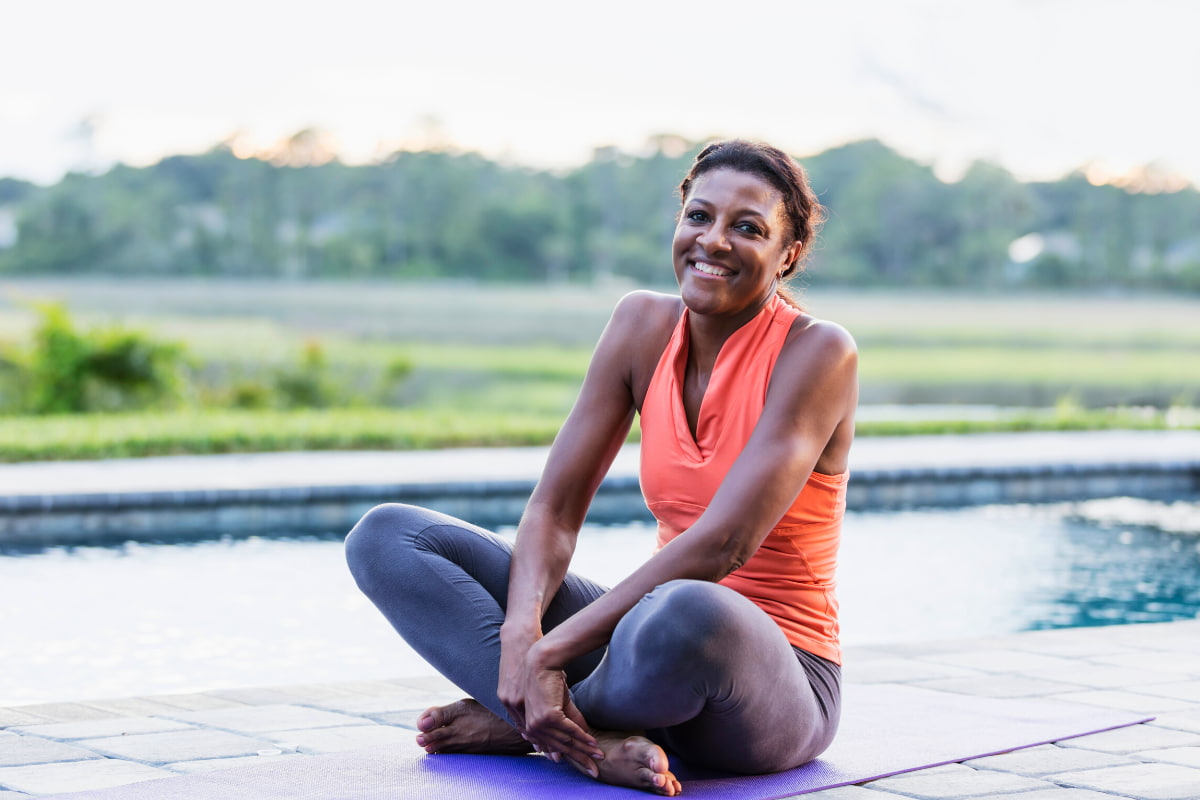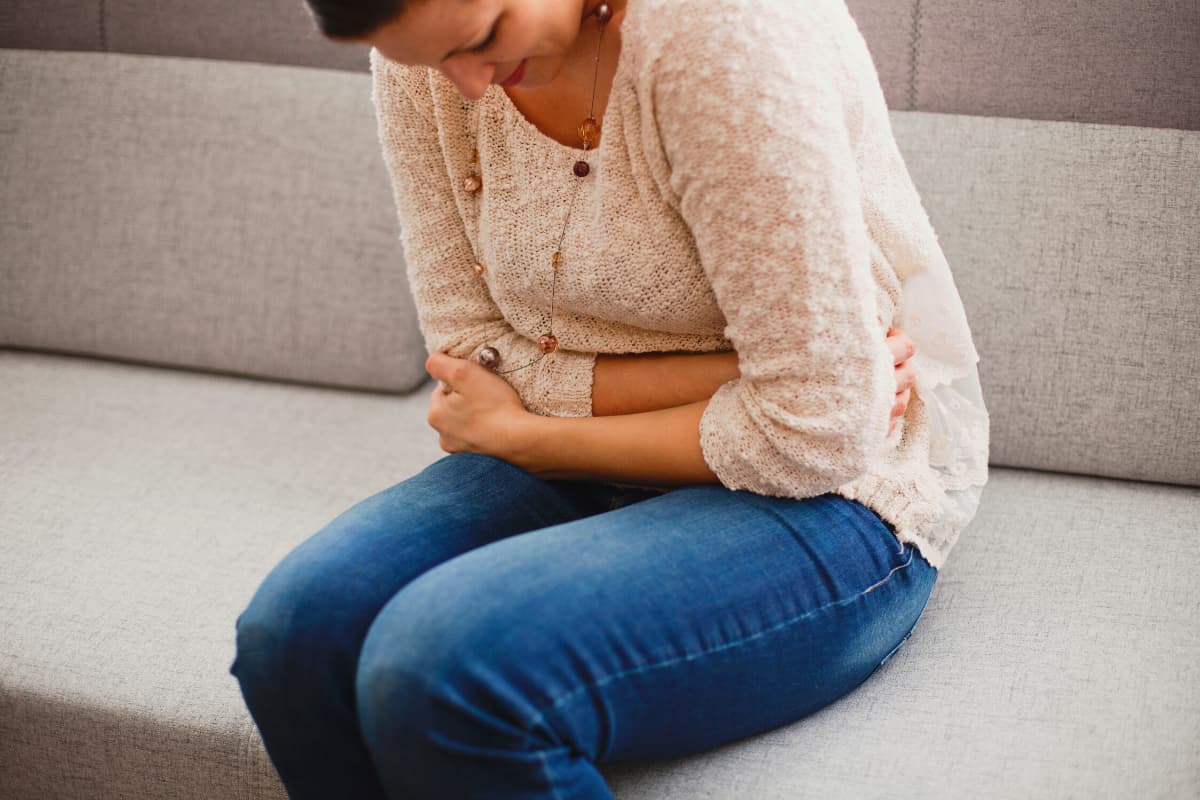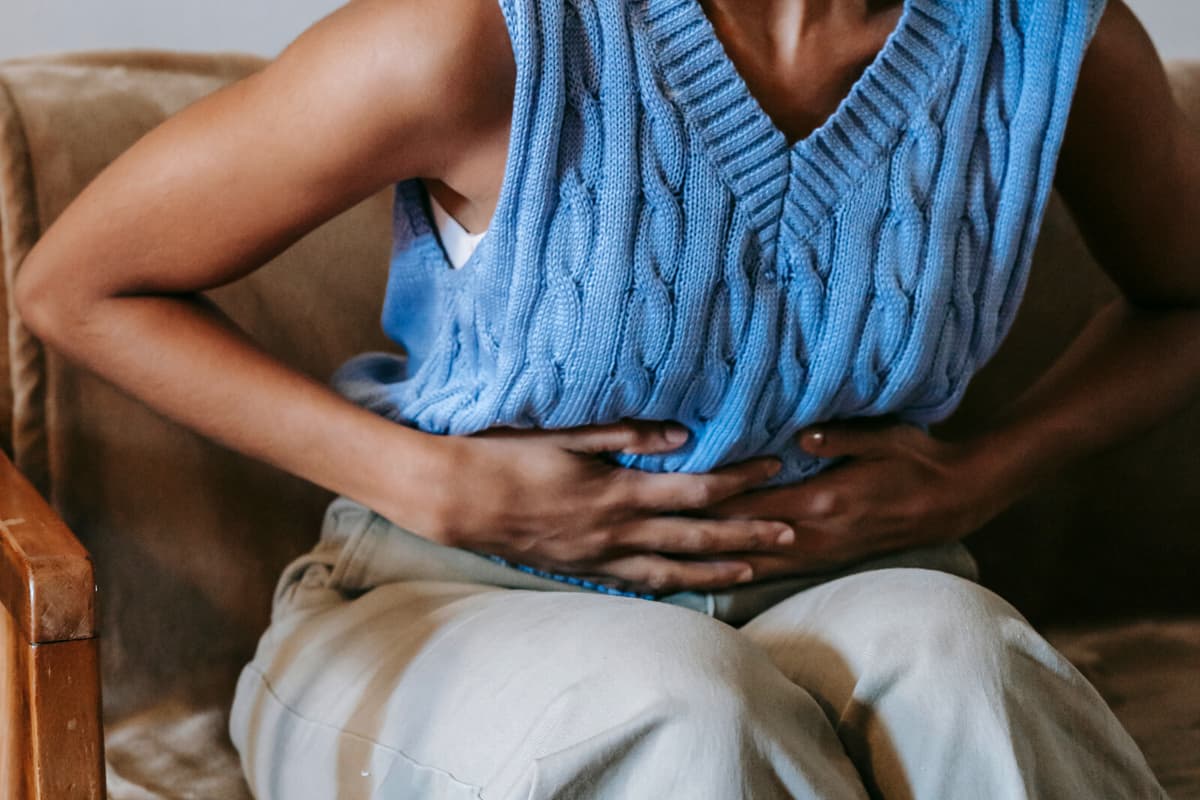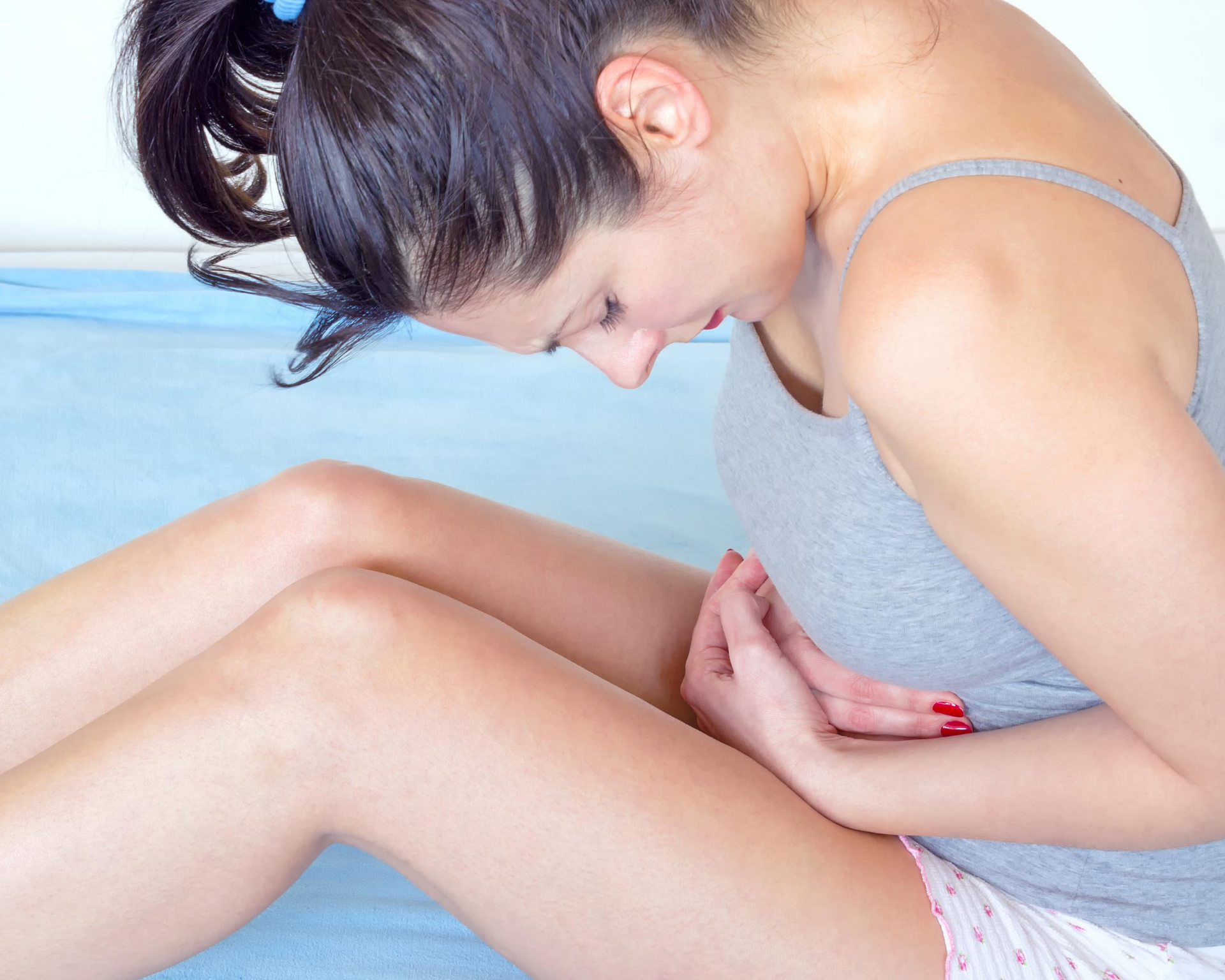Exercises to Relieve Menopause Constipation and Bloating

The menopause transition can bring a list of uncomfortable symptoms, including gastrointestinal disturbances. This can include constipation, bloating, or both. The cause of these conditions is likely a drop in the hormones estrogen and progesterone. Exercise and other techniques can help get things moving consistently.
Top Exercises For Constipation and Bloating
Aerobic Exercises
Aerobic exercise such as walking, swimming, or riding a bike is known to help with constipation. The American College of Sports Medicine recommends moderate-intensity aerobic physical activity for a minimum of 30 minutes on five days per week or vigorous-intensity aerobic activity for a minimum of 20 minutes on three days per week for cardiovascular fitness. However, any exercise you can squeeze into your day will help! Even small amounts of aerobic exercise throughout the day have been shown to have multiple health benefits, including constipation and bloating relief.
Abdominal Exercises
Abdominal exercises can also stimulate gut mobility. Gentle or isometric abdominal contractions can help move gas or stool through the colon and relieve some bloating and constipation. Gentle yoga stretching and poses, particularly those involving twisting of the abdomen, can also help stimulate the gut and even decrease some of the pain associated with constipation and bloating. Click here for a demonstration of an abdominal exercise and some yoga moves. Remember that nothing should be painful.
Relaxation Exercises
Relaxation techniques are beneficial for several reasons. The first reason is that constipation is linked to stress and higher levels of cortisol. Therefore, the more relaxed state we can be in, the better mobility in our gut. Second, pelvic floor tightness frequently contributes to constipation, and our pelvic floor muscles must relax to have a bowel movement. In addition, a specific pelvic floor muscle called the puborectalis wraps around the rectum and makes it difficult to eliminate. To relax the pelvic floor, get into a comfortable position. Think about dropping the pelvic floor muscles towards your feet while you breathe deeply and relax your hips, stomach, arms, and legs. Your pelvic floor physical therapist can ensure you are doing this correctly!
Additional Tips
Massage
Colon massage is another helpful tool to decrease constipation, bloating, and discomfort accompanying these symptoms. Start at your right hip and gently press down in a circular motion using two fingers. Gradually work along the path of the large intestine–up to your ribcage, across the stomach, skipping the two inches in the center of your stomach/ribcage, and continuing on the other side. Work your way down to the left hip and even towards your pelvic bone. Do about eight circles, once or twice daily, to stimulate and increase blood flow to the colon. This video shows the proper way to perform a colon massage.
Position Yourself Correctly on the Toilet
Sit on the toilet with your feet on a step stool, so your knees are higher than your hips, and lean forward. This will put your rectum in a much better position to empty. Furthermore, it allows the puborectalis muscle (part of our pelvic floor muscles) to give a little and let stool pass through more easily. Deep breathe and relax as much as you can. Try not to strain or push to minimize stress on your pelvic organs. You might also set a timer (real or estimated) for at least five minutes to give yourself enough time to empty your bowels fully.
Push the H2O
We need at least 64 ounces of water each day. If you drink caffeinated beverages, you need even more! Although caffeine may get your bowels moving in the short term, caffeine is a diuretic that dehydrates you. In the long term, caffeine probably contributes to some of your constipation. Drink water throughout the day, so you aren’t just trying to catch up late in the afternoon or evening. Our gut needs a steady influx of water and food. Also, closely inspect your current diet. It is easy to miss additives and preservatives that are in the foods we eat. Try to eliminate eating or drinking artificially flavored foods/drinks and items that have a long list of strange ingredients. Even gums, mints, and water additives/substitutes can contain gut-irritating ingredients.
Talk To a Professional
Ask your healthcare clinician if a probiotic may help your symptoms. And if you have any bleeding or pain during a bowel movement, consult your clinician. These issues could indicate hemorrhoids or a fissure, which can develop from constipation.
Also, inquire about pelvic floor physical therapy (PT). A pelvic floor PT can use manual techniques and biofeedback training to help your symptoms. Find a pelvic floor PT near you here, and read our article on the benefits of PT for women in menopause and midlife.
A consult with a dietitian is always helpful as well. They are the experts in teaching you tips and tricks for eating a healthy, high-fiber diet. For some people, your dietitian or healthcare clinician may suggest trying the FODMAP diet, which includes foods that are typically easier to digest.
Constipation and abdominal bloating can be uncomfortable, but through the right regimen of exercise, diet, stress management, and help from professionals, relief is within reach.
Looking for more expert support on menopause symptoms? Download Midday from the App Store or visit us at Midday.Health.
Katie Ruebush, DPT, is a licensed physical therapist who sees outpatient pelvic health patients and inpatient obstetrical patients at Memorial Hospital in Carthage, IL. Outside of work, Katie enjoys running and spending time on their family farm with her husband and two sons.
Sign up for more unique women’s health content
By submitting this form, you agree to the Lisa Health Privacy Policy and Terms of Use


